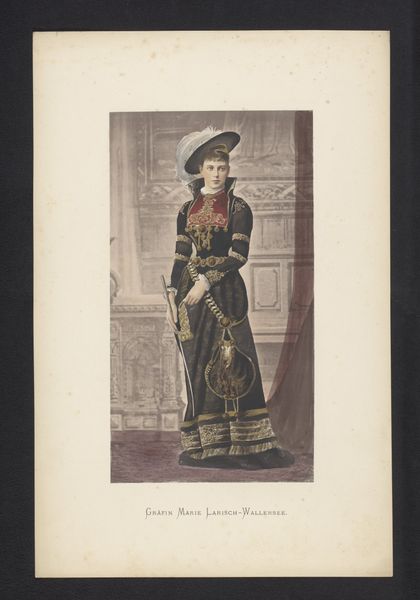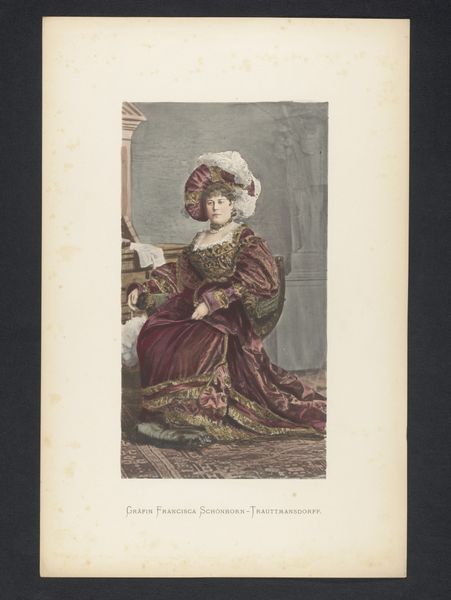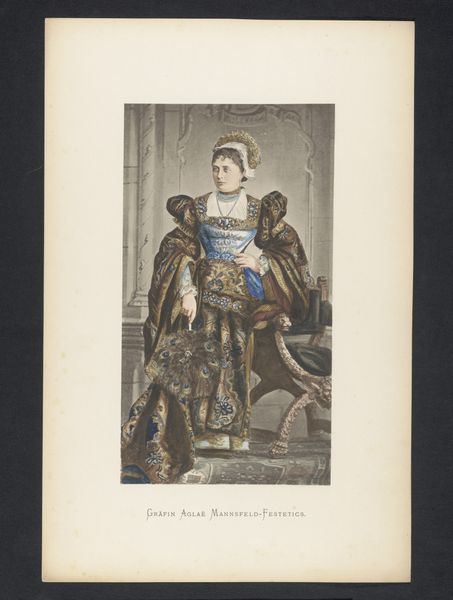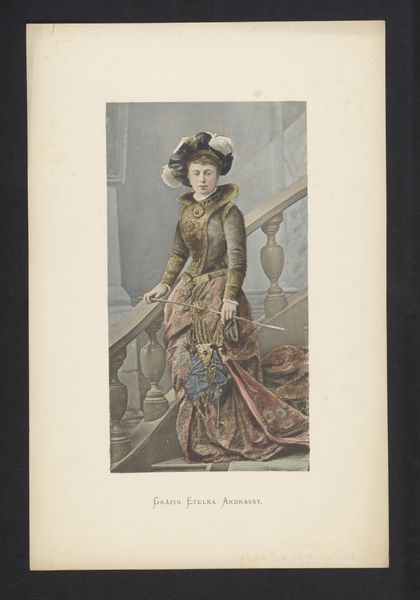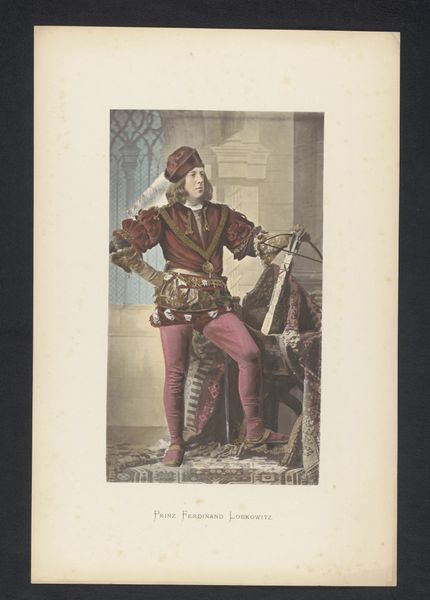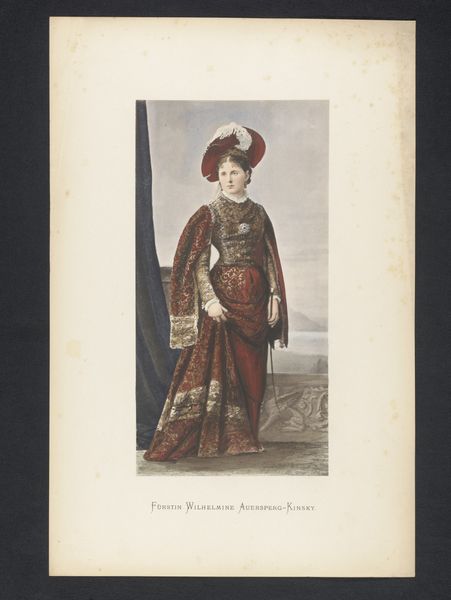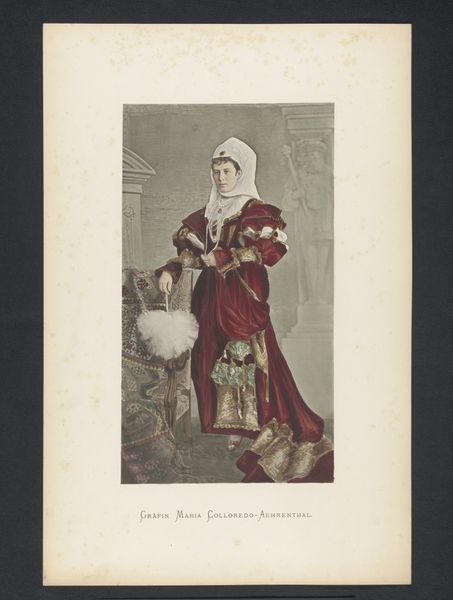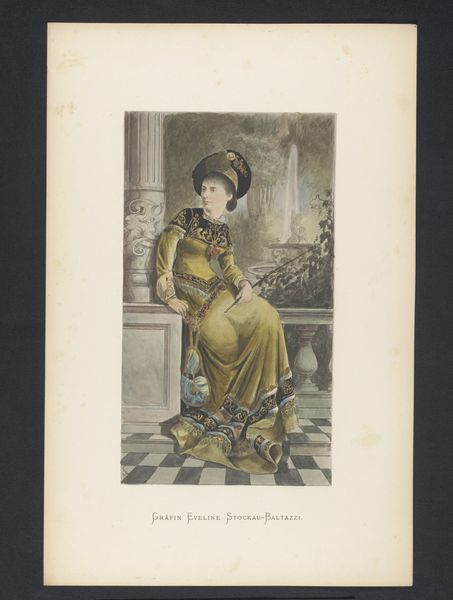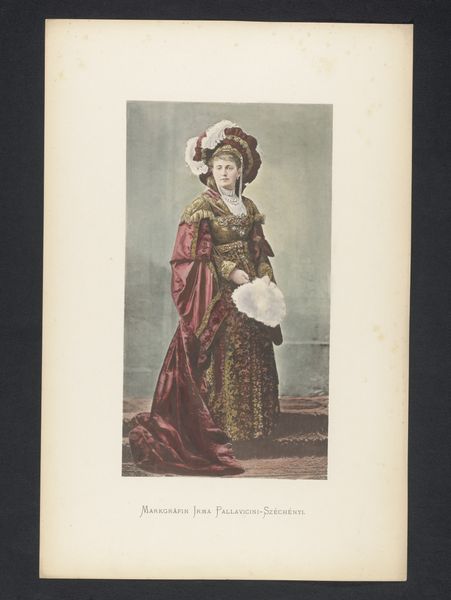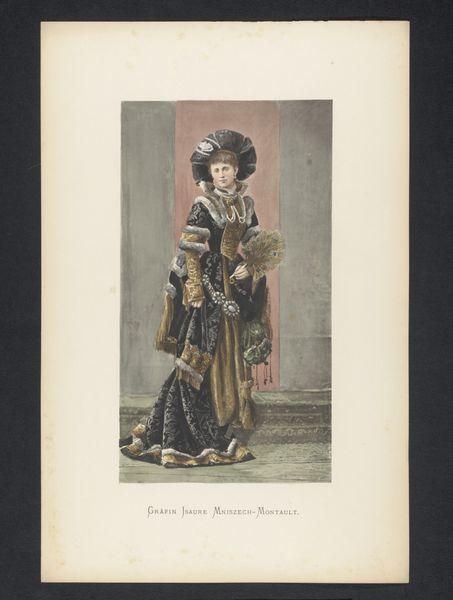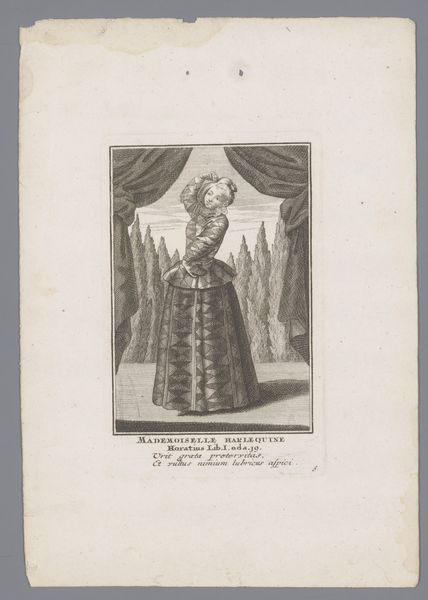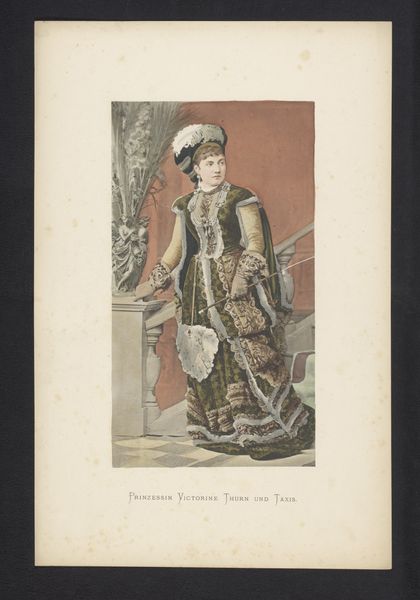
Portret van gravin Alice de la Fontaine et d'Harnoncourt-Unverzagt Possibly 1880 - 1884
0:00
0:00
coloured-pencil
#
portrait
#
coloured-pencil
#
figuration
#
coloured pencil
#
academic-art
Dimensions: height 368 mm, width 209 mm
Copyright: Rijks Museum: Open Domain
Curator: Look at this arresting portrait! "Portret van gravin Alice de la Fontaine et d'Harnoncourt-Unverzagt," likely created between 1880 and 1884. The artist chose colored pencil to capture this woman, an aristocrat of the time. What's your initial reaction? Editor: There's such richness of detail in the textures of the fabrics and ornaments. The sheer labor of layering those pencil strokes to evoke brocade and jewels—it’s a testament to painstaking skill and material knowledge. Curator: Indeed! Consider Alice within the constructs of 19th-century nobility. She isn’t merely a face; she represents lineage, societal expectations, and the performance of her class identity. Editor: The rendering is beautiful but there’s something posed about it, a very constructed reality being presented through the craftsmanship. It speaks to the elite consumer class and their reliance on commissioned art. What was it made for? What was the social value? Curator: Precisely! It echoes feminist critiques about women being ornamental objects, subject to the gaze of the male artist and wider society. Note how she presents a rigid, almost militaristic demeanor. What does this convey about gender expectations of the period? Editor: The rigid pose definitely makes it appear constructed, almost like a stage set—lighting, props, actors carefully placed. Someone certainly thought a lot about the staging and then how it would be conveyed via these pencils to create this record of a moment and, indeed, a person. Curator: Layered within the artistic choices, we can unravel societal nuances of wealth, gender, and power relations of the period. The clothing’s elaborate design and texture is a visual testament to economic and social standing, isn't it? Editor: The value is embedded into every layer, every carefully drawn thread. What can it teach us about the networks of artisans required for production and consumption of items within elite Victorian life? Curator: This portrait opens dialogue around representation and agency during that time. There's much to examine regarding the intersection of art and societal power. Editor: Exactly—let’s remember that materiality and production aren't neutral but embedded within broader economic and social contexts, giving insight into historical consumer culture.
Comments
No comments
Be the first to comment and join the conversation on the ultimate creative platform.

